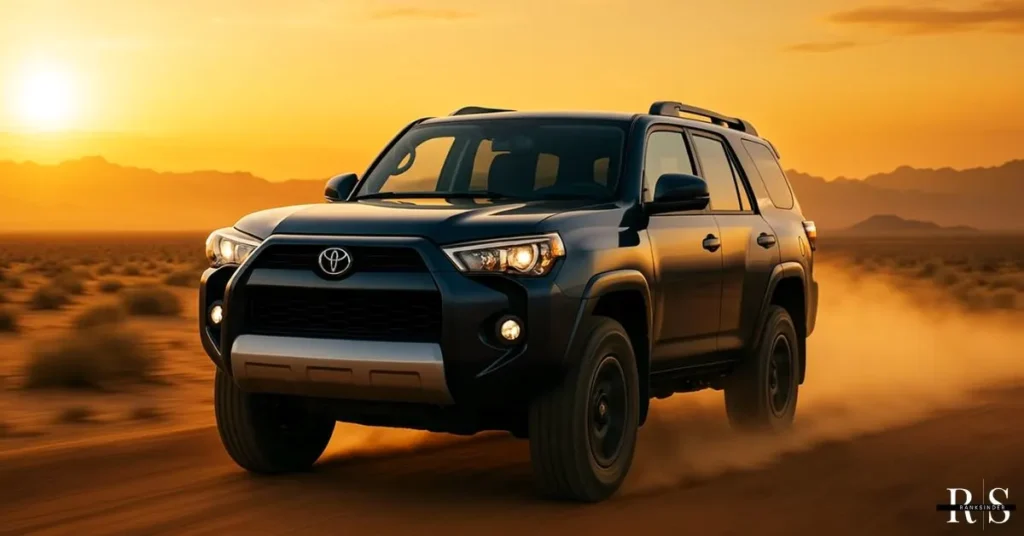If you’re in the market for a Toyota 4Runner, there’s no doubt you’re considering one of the most rugged and reliable SUVs in the market. From off-road adventures to daily commutes, the Toyota 4Runner has earned its reputation as a dependable workhorse. However, not every model year is as reliable as the next. Some years are riddle with Toyota 4Runner reliability issues, which can lead to costly repairs and frustration.
In this article, we’ll break down the best and worst years for Toyota 4Runner, dive deep into Toyota 4Runner years to avoid, and help you make an informed decision when buying your next 4Runner. With insights on everything from head gasket failure to rust issues, we’ve got you cover. Let’s explore the most reliable Toyota 4Runner year and the problematic Toyota 4Runner models you should steer clear of.
Why the Toyota 4Runner Has a Cult Following
The Toyota 4Runner is a standout in the SUV world, particularly for those who value off-road capabilities and long-term reliability. First introduced in 1984, it’s become synonymous with ruggedness. Whether you’re heading into the wild for an off-road adventure or looking for a reliable vehicle to carry your family through various terrains, the 4Runner delivers.
Its sturdy frame, reliable V6 engine, and exceptional off-road features make it a favorite among outdoor enthusiasts and those who need a tough vehicle. Yet, despite its durability, there are specific years when these qualities were compromise, often due to design flaws or manufacturing issues.
Toyota 4Runner Generations Breakdown
To better understand the Toyota 4Runner years to avoid, it’s important to look at the Toyota 4Runner generation comparison. Over the years, Toyota has made numerous improvements, but some years have come with their own unique set of issues.
Here’s a quick look at the Toyota 4Runner’s evolution:
| Generation | Years | Key Features |
| First | 1984-1989 | Off-road capable, compact SUV with a simple design |
| Second | 1990-1995 | Improved comfort, V6 engine, few issues |
| Third | 1996-2002 | Safety upgrades, rust problems, strong engine options |
| Fourth | 2003-2009 | Bigger, more refined, dashboard cracking, suspension issues |
| Fifth | 2010-Present | Modern tech, minor issues addressed, great off-road capabilities |
While each generation offers its own benefits, certain years stand out as problematic. Let’s break down the Toyota 4Runner years to avoid for each generation.
Toyota 4Runner Years to Avoid: A Detailed Look
1. First Generation (1988–1989)
The first generation Toyota 4Runner was a revolutionary vehicle for its time, with its rugged off-road capabilities and simple design. However, the 1988-1989 models come with a range of issues that make them ones to avoid.
Problems with the 1988-1989 4Runner:
- Engine Troubles: The 3.0L V6 engine had a tendency to suffer from head gasket failure. This can lead to overheating, oil leaks, and eventually engine failure.
- Rust Issues: The body frame was prone to rust, especially in areas with harsher climates, leading to structural integrity issues.
- Suspension Wear: The suspension on these early models was not as robust as later models, leading to a rougher ride and quicker wear.
If you’re eyeing a used 4Runner from this generation, consider avoiding the 1988-1989 models due to these major mechanical issues.
2. Second Generation (1990–1995)
The second-generation 4Runner made significant improvements in comfort and power, particularly with the introduction of the 3.0L V6 engine. However, these years still carry their own set of reliability concerns.
Common Issues:
- Head Gasket Failures: Similar to the first generation, the 3.0L V6 engine faced frequent head gasket failure, leading to costly repairs.
- Rust Problems: The rust issues continued into this generation, particularly in the undercarriage, which can be a deal-breaker for many buyers in cold climates.
- Suspension Wear: Many second-generation models experienced suspension problems, especially in models used for heavy off-roading.
If you’re in the market for a second-gen 4Runner, the 1990-1995 models should be avoided unless the vehicle has been well-maintained and thoroughly inspected.
3. Third Generation (2001–2002)
The third-generation Toyota 4Runner was a step forward in terms of safety and power, but the 2001-2002 models had significant issues, particularly with the transmission and rust.
Key Problems with 2001-2002 Models:
- Transmission Issues: Early third-gen models had problems with the transmission, especially in the AWD systems. These issues were often related to improper shifting and slippage.
- Rust: Rust continued to be a problem, especially in the frames, which could compromise safety over time.
- Brake System Failures: The ABS system in these models was prone to malfunction, causing safety concerns during emergency braking.
Many consider the 2001-2002 4Runner among the worst Toyota 4Runner years due to these persistent issues.
4. Fourth Generation (2003–2005)
The fourth-generation 4Runner introduced more comfort, technology, and off-road features, but early models from 2003-2005 experienced significant reliability issues.
Common Problems:
- Head Gasket Failures: The V8 engine in particular suffered from head gasket failures, leading to expensive repairs.
- Dashboard Cracking: Owners of these models reported severe cracking of the dashboard, which can be both a cosmetic and safety issue.
- Rust: Though better than previous generations, rust was still a concern, particularly on the undercarriage and rear frame.
- Brake Master Cylinder Failures: The brake system in the early years of this generation was known to fail, leading to costly repairs and safety risks.
The 2003-2005 models are best avoided unless you can confirm that the issues have been repaired.
5. Fifth Generation (2010-Present)
The fifth-generation Toyota 4Runner has been largely reliable, but there are still some early years with known issues that should make you cautious.
Early Issues:
- Airbag Deployment Problems: In the early years (2010-2012), some models experienced issues with airbag deployment, which could lead to dangerous situations.
- Door Lock Actuator Failures: This issue caused the door locks to malfunction, making it difficult to secure the vehicle.
- Transmission Issues: Some models had early transmission problems, though these were mostly corrected by 2014.
While the fifth-generation Toyota 4Runner has overall excellent reliability, early years such as 2010-2012 should be carefully inspected for these issues.
How to Identify Problematic Toyota 4Runner Models
Knowing the Toyota 4Runner common problems can help you spot red flags when shopping for a used 4Runner. Here are a few tips for identifying problematic Toyota 4Runner models:
- Rust Checks: Inspect the undercarriage and frame, particularly in states where salt is used on roads in winter.
- Engine Inspections: If you’re buying a model from 1988-2002, ensure the engine has been check for head gasket issues.
- Dashboard Condition: If you’re considering a 2003-2005 model, check for any visible dashboard cracking, which is a common issue.
- Transmission and Brake Function: Always test the transmission for smooth shifting and check the brake system for responsiveness.
The Best Toyota 4Runner Years
While certain years are more troublesome, many models have proven themselves to be extremely reliable and suitable for both daily driving and off-road adventures.
Best Years to Buy a Toyota 4Runner:
| Generation | Best Years | Why They’re Reliable |
| First | 1984-1987 | Fewer mechanical complexities, reliable for its time |
| Second | 1994-1995 | Improved reliability, fewer issues by the end of the generation |
| Third | 1999-2000 | Rust issues reduced, solid V6 engine performance |
| Fourth | 2008-2009 | Final years of the generation with addressed issues |
| Fifth | 2014-Present | Updated features, minimal issues post-2014 |
These years offer the best combination of reliability, off-road ability, and value.
Conclusion
The Toyota 4Runner is one of the most respected SUVs on the market, buy Toyota 4Runner years to avoid coming with their own set of headaches. From head gasket failures to rust issues, not every 4Runner is created equal.
Before you make a purchase, it’s essential to know which years have Toyota 4Runner reliability issues and which ones are the most dependable. By avoiding the worst Toyota 4Runner years and opting for one of the more reliable models, you can enjoy years of trouble-free driving.

Zayn, the founder of Ranksinder.info, is passionate about delivering research-based, informative, and engaging content in Technology, Fashion, Finance, Biography, Travel, and Automotive. With a vision to make Ranksinder.info a trusted knowledge hub, Zayn focuses on quality content, accuracy, and user experience.







